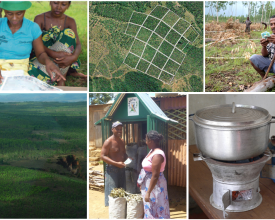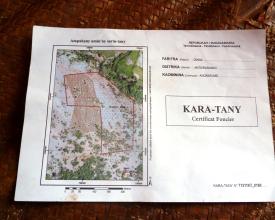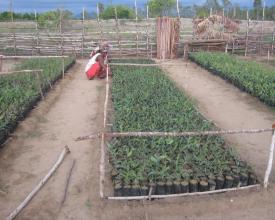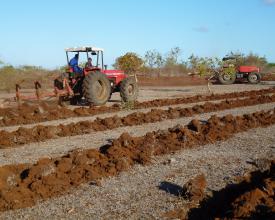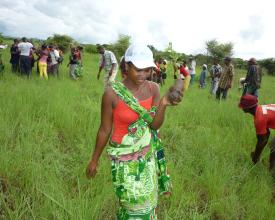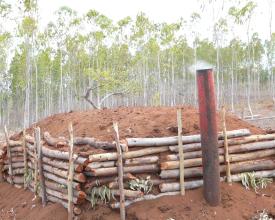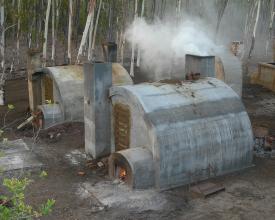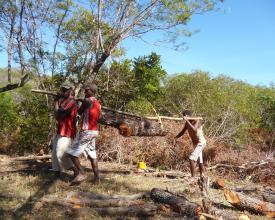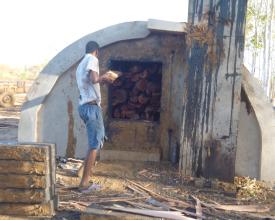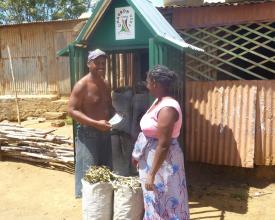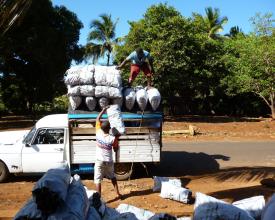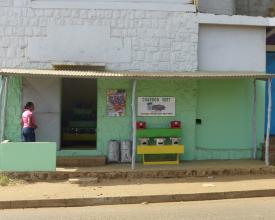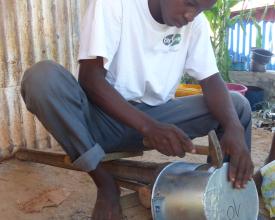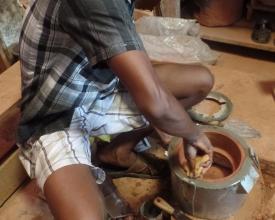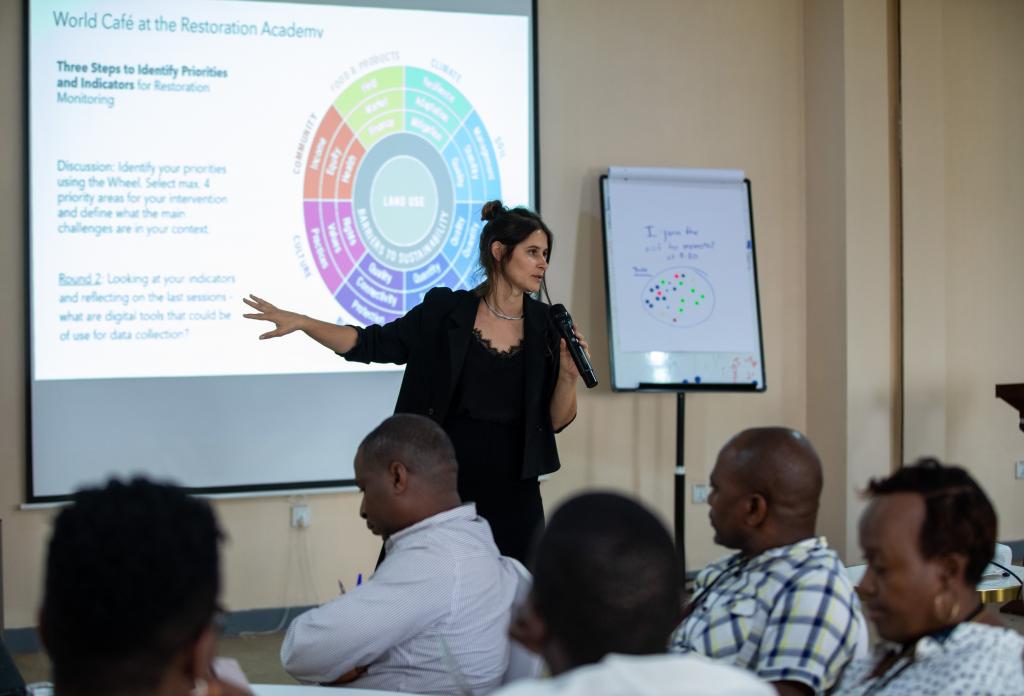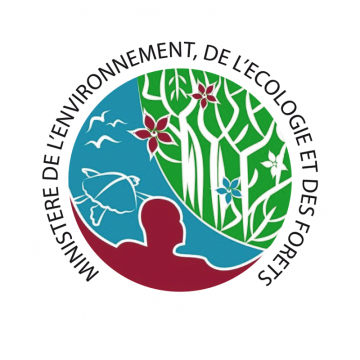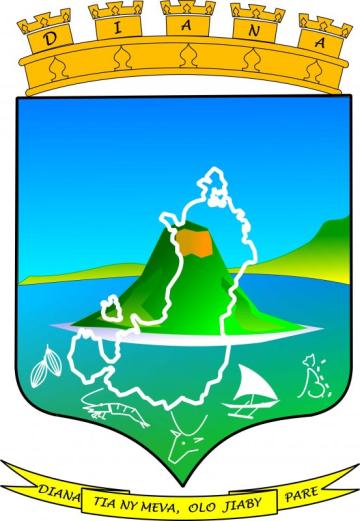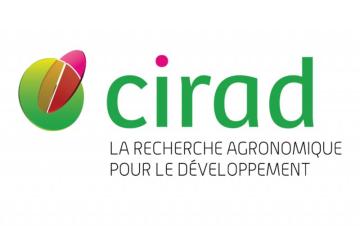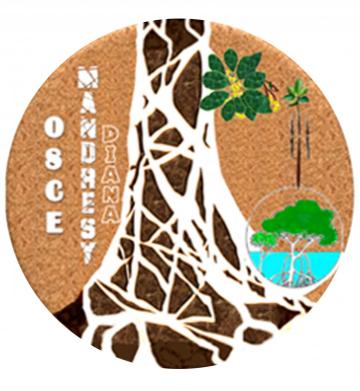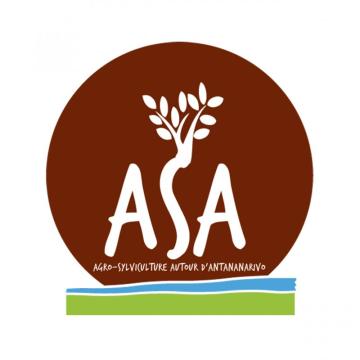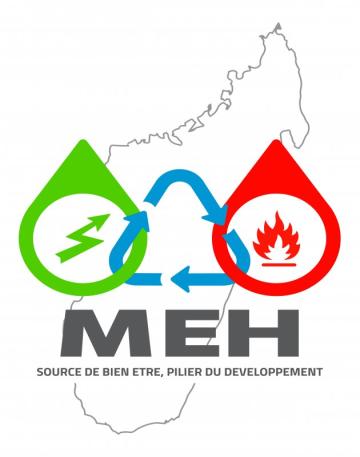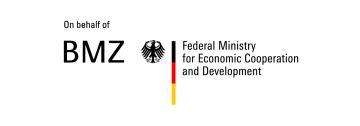
Rehabilitación de tierras mediante la reforestación: el poder de los derechos de propiedad en la cadena de valor de la energía de la madera ecológica
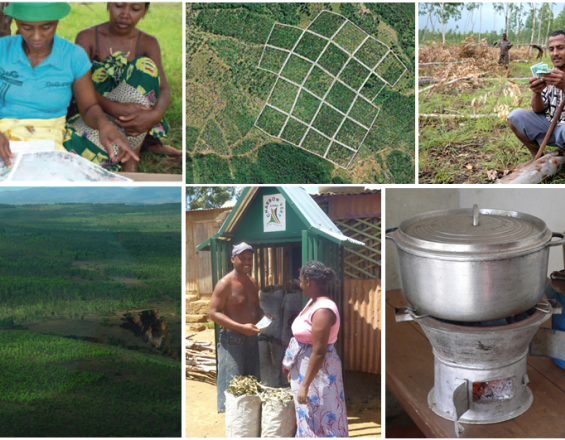
Satisfacer la creciente demanda de dendroenergía es un reto y un factor de deforestación y degradación forestal. Los compromisos de restauración del paisaje forestal (FLR) y AFR100 también abordan la producción sostenible de dendroenergía para satisfacer las realidades sociales y económicas.
Esta solución aplica una visión holística de la cadena de valor de la dendroenergía dirigiéndose a todas las partes interesadas de forma adaptada. La forestación a pequeña escala es el núcleo de la solución. Combina elementos jurídicos, de gobernanza, económicos y técnicos, desde la transferencia de títulos de propiedad de la tierra y los planes individuales de forestación en tierras degradadas a nivel de aldea, hasta la recogida de leña, el procesamiento, la conversión, la distribución y la comercialización de carbón vegetal energéticamente eficiente, hasta llegar a los consumidores finales y la tecnología de combustión relacionada (cocinas mejoradas).
Moderniza la cadena de valor de la dendroenergía y genera beneficios tanto para los guardas forestales como para los productores de cocinas mejoradas y los consumidores finales. Sus ingresos anuales se han duplicado por término medio.
Contexto
Défis à relever
- La deforestación y la erosión han degradado muchos suelos fértiles durante las dos últimas décadas. La fuerte erosión y las frecuentes inundaciones destruyen los arrozales, lo que afecta a la seguridad alimentaria.
- Los agricultores recurren cada vez más a la producción de carbón vegetal para ganarse la vida. Los bosques y las sabanas se utilizan a menudo de forma ilegal, como un recurso de libre acceso. La producción de carbón vegetal es una atractiva fuente de ingresos, ya que el 85% de los hogares dependen de él para cocinar. La demanda aumentará drásticamente en las próximas décadas.
- Los carboneros reaccionan intensificando la tala, avanzando aún más en ecosistemas frágiles como los manglares y los bosques secos. Los hornos y cocinas tradicionales ineficaces se suman a las cantidades excesivas consumidas (Diana: 1.000.000 m3/a), muy por encima de la capacidad de regeneración natural.
- La deforestación y la degradación resultantes afectan a los recursos hídricos y aumentan la vulnerabilidad a las catástrofes naturales y al cambio climático.
Ubicación
Procesar
Resumen del proceso
La asignación de derechos claros de tenencia de la tierra a las comunidades (BB1) proporciona la base para los planes de reforestación individual basados en las aldeas (BB2). La combinación de plantaciones de leña gestionadas de forma sostenible con la introducción de tecnología de hornos optimizada (BB3) permite establecer la comercialización de productos de carbón vegetal con etiqueta verde (BB4). La optimización de las tecnologías de combustión (BB5) a través de cocinas mejoradas permite reducir la presión sobre los recursos forestales (BB2) y los costes de adquisición del carbón vegetal (BB4). La creación de políticas y leyes favorables (BB6) es un proceso paralelo que refuerza la actual cadena de valor del carbón vegetal y promueve su ampliación en el futuro.
Bloques de construcción
Seguridad en la tenencia de la tierra para los plantadores de árboles
Mediante un proceso de aprobación participativo basado en las aldeas, se asignan lugares de reforestación individuales a los hogares, junto con derechos y obligaciones de uso definidos, siguiendo los siguientes pasos:
- Solicitud a las autoridades forestales locales por parte de los pequeños propietarios a través de grupos de usuarios voluntarios.
- Consulta en el pueblo para excluir por adelantado las tierras en disputa y para tomar una decisión unánime sobre la futura asignación de las zonas de reforestación. Resultados: actas y croquis
- Verificación por parte de los responsables comunales y aprobación por decreto comunal.
- Asignación de tierras al organismo de repoblación forestal del pueblo sobre la base de un pliego de condiciones
- Cartografía de los lotes de madera individuales; los propietarios de las parcelas reciben un mapa individual con coordenadas GPS firmado por el alcalde de la comunidad
- Registro de las parcelas por parte de la oficina de tierras; verificación oficial de la parcela de reforestación basada en el plano de croquis, el decreto comunal y la inscripción en el plan de tenencia local.
Las autoridades forestales registran la transferencia de los derechos de uso por un período indefinido, incluyendo la igualdad de acceso y el reparto de beneficios para los participantes. Las familias de pequeños agricultores que participan en el plan de forestación son propietarias de unas 3 hectáreas. Esto les permite producir unas 2,6 t de carbón vegetal al año durante 27 años sin necesidad de nuevas inversiones.
Factores facilitadores
- Disponibilidad de terrenos baldíos no aptos para otros usos del suelo
- Implicación de los municipios (decreto municipal para la asignación de tierras para reforestación y gestión descentralizada de la tierra)
- Marco jurídico, en particular la reforma agraria de 2005 que permite la certificación de tierras a través de los municipios
Lección aprendida
- La concesión de derechos individuales de uso de la tierra a largo plazo marca un nivel nuevo y sin precedentes de seguridad en la tenencia, motivación y propiedad
- El número de incendios forestales en las zonas de forestación disminuyó, ya que los propietarios de los bosques tienen interés en proteger su propiedad.
- Los ingresos aumentaron en un ~40% en comparación con los ingresos medios de las zonas rurales. En el caso del tercio sin tierra de los hogares agrícolas rurales, el aumento es significativamente mayor.
- Los grupos de usuarios se autogestionan y funcionan de forma autónoma, con formación y apoyo organizativo (estatutos, administración, formación de comités, bases de datos) proporcionados por el proyecto, las ONG y otros socios locales.
- No se proporciona apoyo monetario directo
- La planificación del uso de la tierra ayudó a analizar, valorar y priorizar múltiples intereses territoriales. Fue la base de un proceso de consulta para excluir de antemano las tierras en litigio y permitió tomar una decisión consensuada sobre la asignación y el tamaño de los terrenos.
Planes individuales de reforestación en las aldeas
La plantación de árboles de crecimiento rápido va acompañada de la formación de personal para la gestión de viveros y bosques de acuerdo con unas normas de calidad establecidas.
Cada parcela se demarca, cartografía y documenta con la aprobación de las comunidades. La asistencia técnica corre a cargo de ONG especialmente formadas y dura 21 meses: (i) sensibilización y movilización social (3 meses); formación, planificación y ejecución (8 meses); autogestión (10 meses).
La elección de las especies arbóreas se basó en: ciclos de rotación cortos (4-7 años), resistencia a las fluctuaciones climáticas, idoneidad para el procesamiento mecánico, especialmente en pendientes, y su potencial para contribuir al control de la erosión. La GIZ proporcionó apoyo técnico y administrativo para el equipamiento y las semillas necesarias. Se plantaron con éxito arboledas como zonas tampón alrededor de zonas protegidas y manglares. Otros lugares importantes para la plantación son los cursos de agua y los corredores en las rutas de la fauna migratoria. Los residentes locales se abastecen ahora de madera de las plantaciones.
Las operaciones de vivero se organizan colectivamente; la plantación y el mantenimiento son responsabilidad de los propietarios de las plantaciones.
Factores facilitadores
- Implicación de los municipios que asignan tierras degradadas con fines de reforestación, asegurando derechos de propiedad a largo plazo a los propietarios de las parcelas (decreto comunal) y apoyando los títulos de propiedad individuales a través de sus oficinas locales de registro de la propiedad.
- Derechos de tenencia de la tierra a largo plazo
- Participación voluntaria de las comunidades
- Implicación de la administración regional para identificar posibles zonas de reforestación en su planificación regional del uso del suelo
- Asistencia técnica por parte de ONG certificadas
Lección aprendida
- La elección de las zonas de reforestación se hizo deliberadamente en zonas degradadas sin ningún potencial agrícola para evitar posteriores conflictos de competencia y uso.
- Los lugares se incluyeron en los planes de ordenación territorial y desarrollo regional en coordinación con un grupo multidisciplinar de instituciones públicas y privadas.
- La preparación mecanizada del suelo mediante tractores a lo largo de las curvas de nivel aumentó la percolación del agua de lluvia y garantizó una mayor tasa de supervivencia de las plántulas.
- Los costes de inversión por hectárea ascendieron a 225 euros (incluida la inversión en mano de obra de los agricultores), de los cuales el 66% se sufragó mediante asistencia técnica
- Rehabilitación y gestión de tierras anteriormente degradadas, fomento de la administración por parte de las comunidades y creación de incentivos para enfoques sostenibles en la silvicultura
- La reforestación de zonas degradadas no sólo reduce la presión sobre los recursos forestales existentes, sino que también contrarresta la erosión y otros impactos, especialmente en las proximidades de zonas protegidas.
Optimización de las tecnologías de los hornos de carbón vegetal
Se introdujeron hornos tradicionales mejorados y autoclaves de alto rendimiento, como la autoclave estacionaria "GreenMad Dome". La autoclave ha demostrado un índice de eficacia superior al 30% en comparación con los hornos tradicionales. La tasa interna de rendimiento (4.500 euros/unidad) supera el 40%, lo que supone una producción 3 veces superior. Los nuevos hornos respetuosos con el clima y con reciclado de metano reducen el tiempo de carbonización de 7 días a 72 horas. Las agencias locales de microfinanciación (OTIV) prestaron servicios de microcrédito y se hizo una demostración del uso de combustibles alternativos como astillas, briquetas y pellets.
Los propietarios de los bosques y los carboneros se organizaron como grupos de accionistas, crearon una microempresa registrada para invertir y gestionar la retorta, y comercializar la producción sobre la base de un mercado energético rural.
El plan de negocio de la empresa creada se basa en el plan de gestión de la plantación. Los productores pagan derechos a la comuna e impuestos a la región. Varios mercados rurales de energía se unen para establecer un mercado urbano de carbón vegetal y facilitar la trazabilidad creando una "cadena de valor verde". Los beneficios económicos aumentaron en un 30% en comparación con las estructuras de comercialización tradicionales.
Factores facilitadores
- Una estrategia consensuada de modernización dendroenergética de la región ("Visión 2025") sobre los mercados dendroenergéticos locales, la industrialización de los procesos de carbonización y la evitación de talas incontroladas en los bosques primarios.
- Las plantaciones de crecimiento rápido gestionadas con ciclos de rotación cortos producen grandes cantidades de madera
- Implicación de los beneficiarios en el proceso de investigación/acción para ver las diferencias de aumento de eficiencia en comparación con su tecnología habitual
- Transferencia de conocimientos a dos niveles (formador a usuarios, usuarios a usuarios)
Lección aprendida
- En lugar de los hornos tradicionales anteriores, que funcionan con un índice de eficacia del 10-12% y desperdician grandes porciones de recursos, los carboneros de la zona del proyecto utilizan hornos mejorados con índices de eficacia de hasta el 35%.
- Otra ventaja de la retorta es que evita las emisiones de CH4 al reciclar los gases de combustión que normalmente se emitirían a la atmósfera. Dado el elevado potencial de calentamiento global del CH4 (21 veces el del CO2), esta tecnología produce importantes reducciones equivalentes de CO2.
- La introducción de tecnologías de horno mejoradas dio a las asociaciones de productores locales el margen financiero necesario para implicarse más en la comercialización de combustible de madera, obtener beneficios e incluir normas de sostenibilidad. Además, al formalizarse, pueden cumplir las normas y obligaciones financieras.
Comercialización de carbón vegetal etiquetado
El concepto de "cadena verde del carbón vegetal" responde a las distorsiones estructurales del mercado garantizando a los productores (como miembros de cooperativas comerciales locales) precios de compra más altos por el carbón vegetal de origen sostenible. Los mercados rurales especialmente establecidos permiten a los productores vender combustible de madera y carbón vegetal exclusivamente con una prueba de origen. La etiqueta "Charbon Vert " documenta que los productos etiquetados han sido certificados según normas verificables.
El coste directo de la repoblación forestal asciende a 225 EUR/ha, de los que los agricultores aportan aproximadamente un tercio con su propio trabajo. El 65% restante está subvencionado. Las medidas para formalizar los mercados de la dendroenergía incluyen recargos por productos de origen ilegal o no sostenible, tasas y gravámenes diferenciados (aplicados al transporte, la transformación y el comercio), así como un mayor fomento de las asociaciones público-privadas.
Factores facilitadores
- Utilizar las estructuras institucionales existentes o crear otras nuevas para mejorar los procesos participativos de toma de decisiones, apoyar la formalización de la cadena de valor y promover la iniciativa empresarial privada.
- Reducción de impuestos para el carbón sostenible como fuerte incentivo financiero
- Existencia de marcos legales para la reforestación y la producción de carbón vegetal a partir de plantaciones (permisos gratuitos concedidos por el departamento forestal).
- Disponibilidad de recursos y productores de carbón vegetal que garanticen la valorización de las plantaciones
Lección aprendida
- El comercio del carbón vegetal suele estar dominado por estrechas redes de intermediarios (empresas de transporte, mayoristas, minoristas). Estos intermediarios controlan los precios del mercado y evitan que los beneficios económicos lleguen a los consumidores. El fomento de las ventas a pie de explotación redirige una mayor parte de los ingresos a las comunidades. Los incentivos para que los agricultores y los carboneros creen pequeñas empresas rurales formalizadas refuerzan su poder de negociación y sus cuotas de mercado. También facilitan la demostración del origen sostenible del carbón producido
- Hasta que entren en vigor las normativas de uso y la fiscalidad, el carbón sostenible sufre una desventaja competitiva frente al procedente de fuentes no reguladas y no sostenibles
- Mientras los consumidores se nieguen a pagar precios más elevados por el carbón sostenible, la cadena de valor de la dendroenergía puede verse atada, si no se tiene en cuenta su valor como medida de reducción de emisiones.
Optimización de las tecnologías de combustión
Se apoyó la fabricación descentralizada y la difusión de cocinas mejoradas energéticamente eficientes, incluido el desarrollo y ensayo de tecnologías de combustión aún más eficientes, limpias y seguras.
Las cocinas ahorran unas 1.600 toneladas de carbón vegetal al año, por un valor total de 187.500 euros o 15 euros por hogar (lo que corresponde a una reducción del gasto del 25%). Se prueban fuentes de energía alternativas, como el GLP. Los minoristas y los consumidores finales reciben información y asesoramiento, en parte en el marco de asociaciones público-privadas.
Se ha creado una asociación de mujeres (15 miembros) para promover el uso de ICS en los hogares. Se centra en educar a los hogares sobre los peligros medioambientales y sanitarios asociados a las cocinas tradicionales y las ventajas de las ICS. La mayoría de los puntos de producción y venta de ICS están gestionados por mujeres. Se ha creado un panel de 150 hogares para supervisar anualmente el patrón de consumo y la tasa de adopción de las ICS. Hasta la fecha, unas 12.500 familias (alrededor del 30% de todos los hogares de Diego) utilizan SCI. En lugar de 117 kg/pers./año, los hogares sólo consumen 89 kg/pers./año de carbón vegetal.
Factores facilitadores
- Acuerdos y armonización con los planteamientos de otros proyectos apoyados por donantes (por ejemplo, el proyecto UPED del Banco Mundial para la introducción de cocinas metálicas mejoradas adaptadas a las prácticas culinarias de los hogares).
- Garantía de calidad meticulosa para cumplir las normas de eficiencia y seguridad
- Creciente precio de mercado del carbón vegetal
- Demanda de algunos hogares de nuevos tipos de cocinas mejoradas, sobre todo de arcilla, que son más eficientes que las cocinas metálicas mejoradas
Lección aprendida
- El proyecto intervino en todos los niveles de la cadena de valor de las ICS, desde la producción hasta la comercialización, apoyando el espíritu empresarial privado y las actividades de relaciones públicas
- Los beneficios de la innovación tecnológica deben compensar los inevitables inconvenientes y dificultades socioeconómicas asociados a la adopción de cocinas mejoradas (alto coste de inversión para el consumidor/caída de ventas para el productor de carbón vegetal).
- El reto consiste en diseñar tipos de cocinas mejoradas que, además de ser compatibles con los hábitos de cocina y las rutinas nutricionales establecidas, se presten fácilmente a la fabricación por parte de los artesanos locales.
- Los fabricantes de cocinas mejoradas necesitan asesoramiento y apoyo al desarrollo empresarial para superar el obstáculo que supone la creación de pequeñas y medianas empresas (PYME).
Crear políticas y leyes propicias
Se ha establecido un sistema de supervisión y control descentralizado a través de las autoridades forestales locales y las patrullas de ejecución en los pueblos. Se ha reforzado la sensibilización contra las prácticas ilegales. Los controles públicos de las rutas de transporte a los puntos de consumo y los mercados garantizan que los carboneros, transportistas y minoristas se sientan motivados para utilizar madera de origen sostenible.
La orientación estratégica sobre las cadenas de valor del carbón vegetal ecológico se ha plasmado en una Estrategia Regional de Modernización (Visión 2020) para la región de DIANA. La estrategia fue el resultado de un proceso de negociación con los principales actores de la sociedad civil. Entre sus elementos clave figuran la mejora de la gestión forestal, la reforestación y la introducción de tecnologías eficientes, así como el desarrollo de mercados locales de dendroenergía.
Se propusieron medidas reguladoras para frenar la producción no regulada y generalizada de dendroenergía en los bosques naturales restantes. Se ha creado una plataforma de coordinación medioambiental (OSC-E/DIANA) que reúne a todos los agentes relevantes de la sociedad civil de la región DIANA. Los miembros de la plataforma se reúnen periódicamente para debatir los avances del proceso de modernización y negociar la forma de superar los próximos obstáculos.
Factores facilitadores
- Concienciación de los responsables políticos para fomentar la madera como fuente de energía renovable
- Buena gobernanza y seguridad de la tenencia, especialmente la asignación autodeterminada de terrenos baldíos a hogares comprometidos con su recuperación y uso sostenible.
- Coordinación de las múltiples partes interesadas (plataforma regional de intercambio de energía de la biomasa - PREEB) para promover la coordinación de la aplicación de la estrategia regional de dendrocombustibles
- Mejora de la aplicación de la ley y de la transparencia para aumentar la competitividad del mercado del carbón sostenible.
Lección aprendida
- La formulación de una estrategia regional para los dendrocombustibles debe basarse en una visión consensuada, un compromiso y una apropiación de alto nivel y una información de base sólida. La estrategia debe combinar la modernización de los aspectos "ascendentes" y "descendentes" de la cadena de valor.
- El desarrollo de la cadena de valor debe respaldarse con apoyo político y desarrollo empresarial.
- El desarrollo de la cadena de valor debe incentivarse mediante exenciones fiscales durante la fase inicial; en fases posteriores, las partes de la cadena de valor podrán aportar fondos a sus respectivos municipios.
Impactos
Social y económica:
- 40.500 personas de Antsiranana (aproximadamente uno de cada tres ciudadanos) tienen acceso a energía doméstica sostenible; se benefician de un suministro fiable, menos riesgos de incendio y para la salud (menos contaminación del aire interior).
- 12.500 hogares (~45.2000 personas) utilizan cocinas mejoradas; ahorran ~1.600 t de carbón vegetal al año, por un valor total de 187.500 euros o 15 euros por hogar (= 25% menos de gasto).
- La situación económica de los pobres sin tierra y de las mujeres se ha visto reforzada gracias al aumento de la propiedad de los bosques.
- El desarrollo regional se vio reforzado por la organización y capacitación innovadoras de las comunidades.
medioambiental:
- 4.200 hogares reforestaron 9.000 hectáreas de terrenos baldíos en 68 pueblos y mejoraron la fertilidad del suelo y la retención de agua.
- La producción sostenible de leña en 9.000 ha ya compensa la explotación no regulada de más de 90.000 ha de bosques naturales, en zonas protegidas y sus alrededores.
- Se aprovechan de forma sostenible unas 1.000 ha de superficie forestal al año. Se puede producir un total de 4.700 toneladas de carbón vegetal.
Ampliación:
- El enfoque se está aplicando en otras regiones de Madagascar en 15.000 ha; Camerún y Ghana han iniciado una réplica.
Beneficiarios
- 4.200 personas de ~70 pueblos (reforestación)
- 275 productores de carbón vegetal (miembros de cooperativas comerciales locales)
- 12.500 hogares (~42.000 personas) utilizan cocinas mejoradas
- 40.500 personas tienen acceso a una mejor dendroenergía
Objetivos de Desarrollo Sostenible
Historia
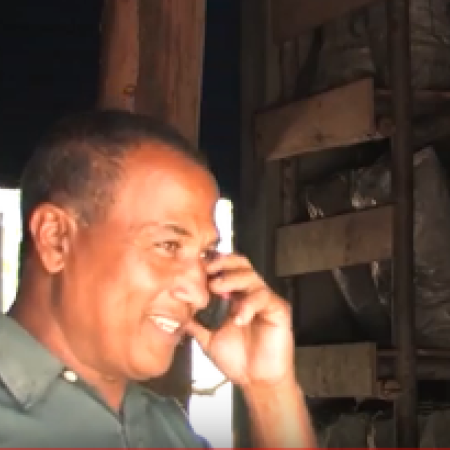
Doudou - el empresario verde: Sin el carbón vegetal, la mayoría de los fogones de las cocinas malgaches permanecerían fríos; sobre todo los habitantes de las ciudades dependen de él. ~85% de los hogares cocinan con carbón vegetal. Es poco probable que las cosas cambien en un futuro próximo. Sólo el 14% de los hogares están conectados a la red eléctrica y sólo una minoría puede permitirse comprar gas.
Un gran número de habitantes del campo completan sus escasos ingresos fabricando carbón vegetal. Lo obtienen ilegalmente de los bosques cercanos, con consecuencias negativas para el medio ambiente. Apenas llueve y el medio ambiente sufre mucho, las ráfagas de viento pueden desencadenar incendios forestales. Durante los periodos de lluvia, la tierra es arrastrada desde las laderas hasta los arrozales. Todo ello perjudica gravemente nuestro futuro.
Abdou Mockbel -o Doudou, como le llaman sus amigos- también producía madera ilegalmente antes. En 1996, oyó hablar por primera vez de la tecnología de los hornos locos ecológicos. Él y su mujer Odette participaron desde el principio.
4200 hogares han participado desde su lanzamiento. Plantan principalmente eucaliptos en una superficie de 9000 ha. Deciden en qué parcela deben plantarse los árboles; los suelos ya degradados pueden volver a utilizarse y protegerse contra los daños de la erosión. Primero producen plántulas entre todos y luego las trasplantan.
El Programa facilitó un proceso administrativo rápido y sencillo de concesión de títulos de propiedad a precios asequibles. Abdou y su mujer lo obtuvieron al cabo de sólo 2 meses. Abdou produce ahora su carbón con un horno moderno. Puede producir el doble de carbón que un horno tradicional y casi cuatro veces más rápido.
Así, con la ayuda de la GIZ, Abdou creó con otros propietarios de parcelas una cooperativa con su propio punto de venta. Ahora venden cada mes hasta 1000 bolsas de carbón vegetal producido de forma sostenible.
